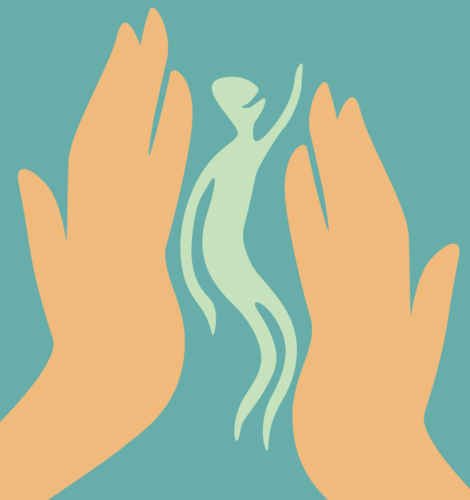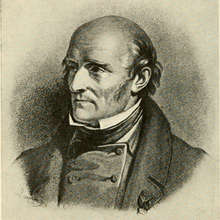Our primal need for touch was demonstrated more than 40 years ago in a series of studies developed by University of Wisconsin researcher Harry Harlow. Harlow raised rhesus monkeys in cages without their natural mothers, but with two surrogate objects instead.
One surrogate "mother" was a wire form that the monkey could approach to receive food. Another form offered no food, but was wrapped in terry cloth so the infant could cling to a softer and cuddly surface.
When a large, threatening object was introduced into the cage, the infant monkeys ran to the terry cloth surrogates. This demonstrated that contact touch comfort was important for the establishment of a relationship associated with security.
Harlow suggested that touch is as important as food to fostering normal development.
Harlow also studied the effects of touch comfort deprivation across the monkey's lifespan, and suggested that extended deprivation of touch contact in early years may disrupt later social and sexual behaviour.
More recent studies with humans and other animals support Harlow’s discoveries.
Measureable effects and research data
A review examined published studies on depression (including sex abuse and eating disorder studies), pain syndrome studies, auto-immune conditions (including asthma and chronic fatigue), immune studies (including HIV and breast cancer), and studies on job stress, the stress of aging, and pregnancy stress.
The positive effects of massage therapy on biochemistry including decreased levels of cortisol and increased levels of serotonin and dopamine were highlighted.
It was found that in the studies in which cortisol (stress hormone) was assayed, either in saliva or in urine, significant decreases averaging 31% were noted in cortisol levels. In studies in which the activating neurotransmitters (serotonin and dopamine) were assayed in urine, an average increase of 28% was noted for serotonin and an average increase of 31% was noted for dopamine.
The review concluded that massage therapy has biochemically measureable health benefits for a variety of health conditions.
In another study, premature babies given 15 minutes of massage three times a day for 10 days gained almost 50% more weight and left hospital 6 days sooner than other infants not given massage treatments. In addition, they performed better on a neonatal behavioural assessment scale that measured both mental and motor skills.
Researchers also tested on baby rats the importance of the behaviour of animal mothers licking their offspring. Using a wet paintbrush as a substitute for a mother’s tongue, researchers noted that the test pups developed at about the same rate as pups that were cared for by their natural mothers. Pups that received no stimulation tended to either grow slower, or become ill. Many that became ill succumbed to their ailment and died.
Several research studies show that massage may facilitate the improvement of immune system function by reducing anxiety and stress, increasing white blood cell counts, decreasing levels of the stress hormone cortisol, and activating disease-fighting cells.
Massage may also decrease pain by relieving muscle spasms, cramps, general body tension, edema (swelling), inflammation, and increasing blood flow, removing more toxins and bringing more oxygen and nutrient to affected areas.
A study of children following Hurricane Andrew found that massage therapy lessened post traumatic stress, decreased anxiety, reduced depression and stress hormone levels.
Research conducted at the Marie Curie Cancer Care, London, UK showed the benefits of massage therapies for cancer patients. The researchers assessed the effects of massage and aromatherapy massage on 103 cancer patients in palliative care.
The patients were randomly allocated to receive massage or aromatherapy massage using the Roman chamomile essential oil. Results suggested that there was a statistically significant reduction in anxiety and stress after each massage, and the patients who received aromatherapy massage also noted improvements in their disposition, physical comfort and their quality of life.
The report concludes that massage with or without essential oils appears to reduce levels of anxiety and stress, but the benefits are clearly enhanced by the addition of Roman chamomile essential oil.
Massage therapy was also found to be an effective adjunct to psychotherapy and pharmacotherapy for 24 adolescent female bulimic inpatients at a residential treatment center.
Compared to a control group the massage group had improved scores including measures of drive for thinness, bulimia, body dissatisfaction, ineffectiveness, and perfectionism. The test group also reported less depression, and had higher dopamine and lower cortisol levels.
A study at the University of Miami Medical School, Florida, reported that massage may offer considerable help for children suffering from stress-related disorders.
A 30-minute back massage was given daily for a 5-day period to 52 children who were hospitalized as suffering from depression and adjustment disorders. Subjective assessments were made by the children themselves and by the nurses based upon perceived anxiety levels, sleep patterns and the willingness of the child to be co-operative.
Objective analyses of stress hormone levels in their urine and saliva were also made. The results were compared to a control group, who were shown relaxing videotapes for 30 minutes instead of receiving massage therapy.
The children who received massage were less depressed or anxious and had lower cortisol levels after the massage. In addition, nurses rated the massage group as being more co-operative on the last day of the research, and noted that the children were sleeping better and longer than those in the control group.
The US Touch Research Institutes have conducted over 90 studies on the effects of massage therapy on various medical conditions in different age groups.
Reported findings of positive effects include enhanced growth (e.g. in preterm infants), diminished pain (e.g. fibromyalgia), decreased autoimmune problems (e.g., increased pulmonary function in asthma and decreased glucose levels in diabetes), enhanced immune function (e.g., increased natural killer cells in HIV and cancer), and enhanced alertness and performance (e.g., EEG pattern of alertness and better performance on math computations).


